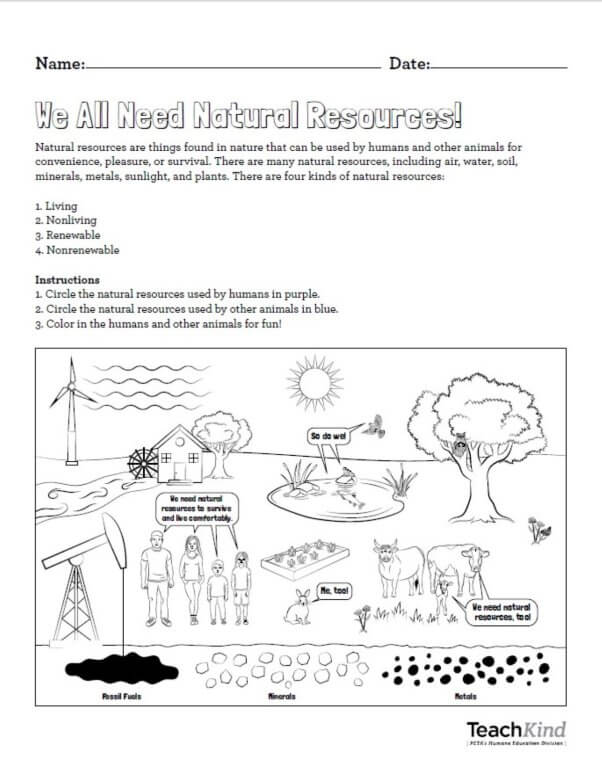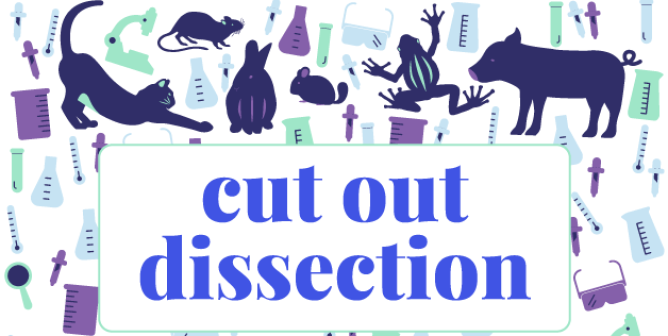Animals Aren’t Natural Resources, They Use Them! A New Activity From TeachKind
Most children understand that animals are thinking, feeling individuals who deserve love and respect and object to harming them, so when they’re taught that animals are natural resources—which are things to be used, not sentient beings—they may become confused. TeachKind has created an animal-friendly lesson that aims to prevent such confusion by reminding students that animals are individuals who rely on natural resources, just like we do.

In this activity, students learn about the differences between natural resources and the sentient beings who use them. They also learn about the similarities between how humans and other animals use natural resources for survival, convenience, and pleasure. For example, we all need air, food, and water to survive, and many of us enjoy the comfort and protection from the sun that trees offer on a hot day.
This worksheet also encourages discussing the environmental implications of viewing animals as natural resources, exploring topics such as the number of animals raised for food in the U.S. each year (about 9 billion); how that affects true natural resources, such as land, crops (plants), and water; how much waste is produced by animals raised for food; and how that waste pollutes the water, air, and soil that we all need to survive. This animal-friendly lesson is a great activity to encourage critical thinking and foster a sense of care for the Earth and its natural resources along with respect and compassion for everyone we share them with.





